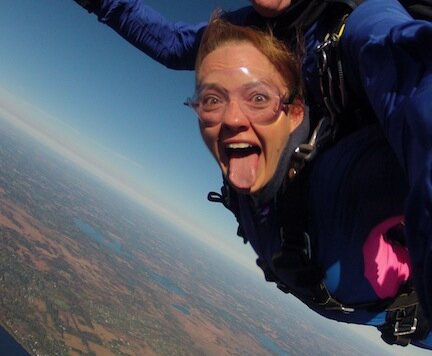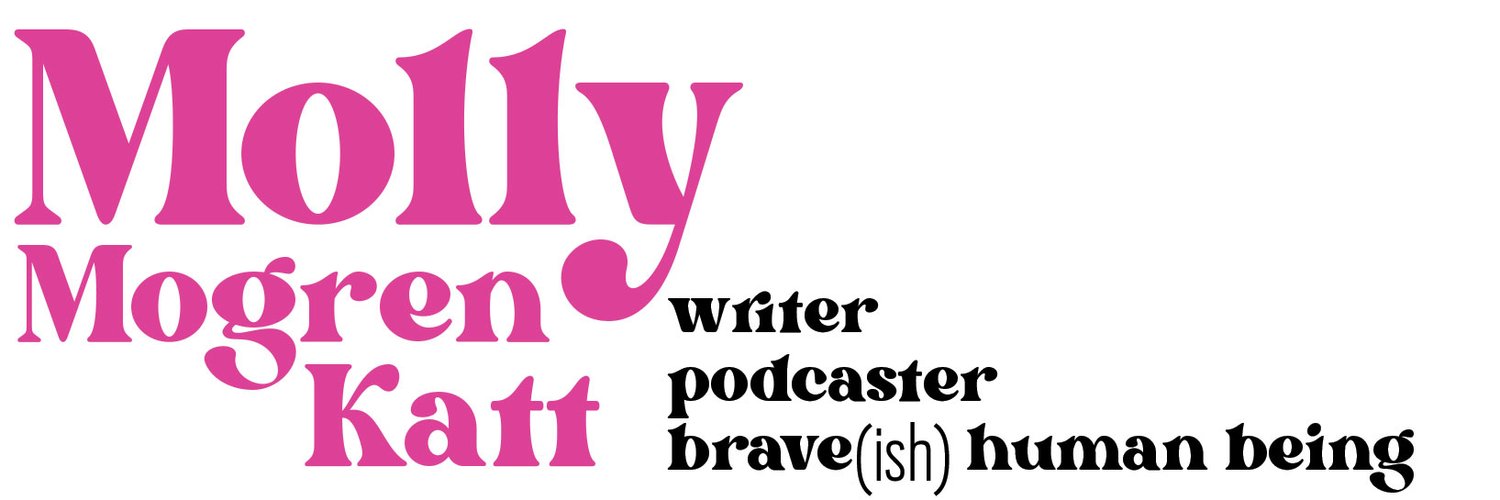What It's Like to Have Your Placenta Encapsulated
The idea of eating my placenta grosses me out.
Do you throw it on a grill, like a steak? Maybe slice it thin and use in a stir fry? Steam it? Ew, ew, and definitely ewwww.And yet, the purported benefits of consuming placenta after birth intrigued me. Allegedly, it increases your energy (definitely a plus), helps with milk production and is said to lessen postpartum depression. Plus, many animals consume their own placentas in the wild, which sounds like a reason why you might want to do it. We are animals, after all.Then again, tigers are known to eat their young and my dog's favorite food is rabbit poop. So...
Postpartum depression topped my list of birth fears.
Depression runs in my family (LOL doesn't it run in everyone's family?!). The thought of drowning in overwhelm and sadness-- all while needing to care for a baby-- scared the ever-loving shit out of me. While I wasn't about to go all Sizzler on my placenta, eating it in pill form seemed doable. And since I am a firm believer in continuing to challenge my comfort zone, I decided to do it.I live in the Twin Cities, and heard about Bywater Birth through a friend. They offer all sorts of birthing services, including placenta encapsulation. The whole thing cost $225, and when you think about how much they do (and the quick turnaround!), that seems more than fair.
Here's how placenta encapsulation works:
1. I told Bywater Birth where I was giving birth and exchanged phone numbers with co-founder Anne so we could call her once the baby was born. Since I was having a scheduled C-section, they knew when to expect to pick up the placenta, but many of their clients who don't have a scheduled birth just text once the baby is born.2. We brought a small cooler and two gallon-sized Ziplock bags to the hospital. You gotta double-bag that stuff! 3. Before my surgery, the nurse asked if I had a birth plan. I didn't really (aside from "have healthy baby"), but did need to tell her that we wanted to keep the placenta. I was kind of embarrassed to tell her, but when I did, she was just like, "Okay, you got it!"4. Because I was still in surgery, I'm a little fuzzy on this part. I think the doctor set the placenta aside in a bag, then put it in a bucket. Someone brought it to our room, where my husband (I think) placed it in the Ziplock bags and set it on ice.5. A few hours after Arlene was born, Anne from Bywater came to our hospital room. It was probably 10pm. She chatted with us briefly, then took the placenta.6. Anne brought the placenta home. She gently steamed, dehydrated, then ground it into a powder. Next, the placenta is put into capsules-- anywhere from 100-200 (depending on your placenta size). Mine made 138 pills.7. Within 24 hours, Anne had returned to the hospital with the pills, plus a dried, heart-shaped umbilical cord "keepsake" that I'm still not sure what to do with! Spray paint it silver and hang it form our Christmas tree?
3. Before my surgery, the nurse asked if I had a birth plan. I didn't really (aside from "have healthy baby"), but did need to tell her that we wanted to keep the placenta. I was kind of embarrassed to tell her, but when I did, she was just like, "Okay, you got it!"4. Because I was still in surgery, I'm a little fuzzy on this part. I think the doctor set the placenta aside in a bag, then put it in a bucket. Someone brought it to our room, where my husband (I think) placed it in the Ziplock bags and set it on ice.5. A few hours after Arlene was born, Anne from Bywater came to our hospital room. It was probably 10pm. She chatted with us briefly, then took the placenta.6. Anne brought the placenta home. She gently steamed, dehydrated, then ground it into a powder. Next, the placenta is put into capsules-- anywhere from 100-200 (depending on your placenta size). Mine made 138 pills.7. Within 24 hours, Anne had returned to the hospital with the pills, plus a dried, heart-shaped umbilical cord "keepsake" that I'm still not sure what to do with! Spray paint it silver and hang it form our Christmas tree?
* * *
Anne suggested I take 2-3 pills each morning for the next 2-3 weeks. Then, maybe dial it back to one a day for the next month or two. After three months, the pills go in the freezer and can be taken as needed (if you're looking for a more balanced feeling, or need more energy). Apparently some people save them for when they hit menopause. I don't know how you can keep track of something in your freezer that long, but if that's your thing, more power to ya.The pills look like... pills. I thought they had a slightly gross flavor (though it may be more in my mind), so I made sure to have a flavored drink ready to go prior to popping them.So, the big question:
Did eating my placenta help?
Claim: It helps with postpartum depression.While my birth was fairly straightforward (planned C-section), the days following were not. I was in a lot of pain, tired and overwhelmed-- aka the exact same things all new moms feel. I had an extremely hard time breastfeeding. Arlene had a weak latch, a late-diagnosed tongue-tie, and breastfed for anywhere from 6-7 hours a day for the first two months. I experienced milk blisters, and my bruised nipples felt like they'd been run through a pencil sharpener.I cried a lot of tears over breastfeeding. And yet, I never plunged into a deep, dark place. In fact, I remember at my lowest of lows thinking, "I mentally feel a lot better than I would've expected."Claim: It keeps you energizedThe first few weeks were exhausting, but there were only a few times where I was so tired I barely felt alive. I wasn't bouncing off the walls or anything, but in general, I felt more awake than I'd expected.Claim: It helps increase milk productionWhile I had many latch and breastfeeding problems, production was NOT an issue. I feel fortunate that I always had enough milk for the baby, plus extra for the freezer.
Verdict: I'd have my placenta encapsulated again.
It's really hard to say if the pills truly helped or not. Arlene is my first baby, so I have no other postpartum experience to compare to. That said, the big three items ingesting your placenta is said to help all rang true for me. I've had a mostly happy, energized and milk-filled postpartum life.Could it be placebo effect? Definitely. Could I just be lucky My baby is awesome, so I for sure am lucky. But it could just be my dried, encapsulated placenta working its magic.Next time, I'll make the same decision. Just in case.
* * *
SIGN UP FOR THE #HEYELEANORCHALLENGE!






